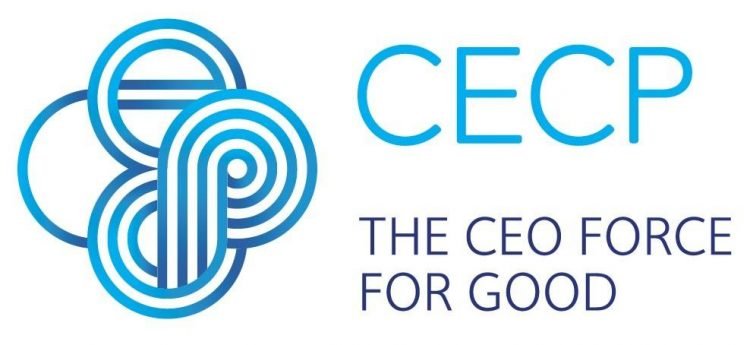The following is a conversation with Daryl Brewster and Carmen Perez of CECP, The CEO Force For Good, and Denver Frederick, Host of The Business of Giving on AM 970 The Answer in New York City.

© be.linkedin.com
- Daryl Brewster
- Carmen Perez
Denver: In the world of philanthropy, one of the most anticipated reports is Giving in Numbers issued by CECP, The CEO Force For Good in partnership with the Conference Board. It’s an in-depth analysis of corporate giving and employee engagement data from the world’s largest companies. And here to share some of the highlights with us are Daryl Brewster, the Chief Executive Officer of CECP and Carmen Perez, their Director of Data Insights.
Thank you both for being here this evening!
Daryl: Delighted to be here and back on the air with you, Denver. It’s always a pleasure.
Carmen: Thanks, Denver.
Denver: Let me start with you, Daryl, by taking a look at the big picture and that would be total giving by corporations in 2016. How does it compare to the earlier period?
Daryl: Denver, once again, we saw an increase over the last couple of years in terms of total corporate giving per the CECP survey. It’s up about 2% since 2016 and we also found that the top quartile companies, that’s the top 25% continued to grow. They were up to $53 million on average, nearly 2% of pre-tax income. So we think, good increase among the overall, among the largest companies. Medium giving among the 256 companies that were in the survey was just shy of $20 million or about 1% of pre-tax income.
Denver: Daryl, what industries help drive this overall increase and conversely were there some that retreated a little bit in their overall giving?
Daryl: The healthcare industry as a whole made a big impact both on terms of increases as well as decreases in the past year. Pharma companies drove the largest proportion of aggregate total giving. They were really drivers of that increase that we talked about. On the other hand, medical equipment subsidiaries really were actually three quarters of the decline. So given some of the concerns over the healthcare bill and other factors, we saw some pretty big swings in the healthcare industry. In total though, we saw an overall stand up again this year.
…CECP is in the position to take a look at where, which social issues companies are giving the most to. It could be education. It could be healthcare. But over the past three years, what we saw actually was a really big jump in culture and the arts.
Denver: Very interesting. Carmen, what kind or type of nonprofit organizations register the largest percentage increase as a result of corporate giving in 2016?
Carmen: That’s a really good question because CECP is in the position to take a look at where, which social issues companies are giving the most to. It could be education. It could be healthcare. But over the past three years, what we saw actually was a really big jump in culture and the arts. So, that could be anything from a local community arts education organization all the way to some of the bigger museums, major symphonies and music, up 48%. So that would be like a company giving $1 million to culture and the arts in 2014 and jumping that all the way up to 1.5 million in 2016.
One major trend from Giving in Numbers is deeper partnerships. So as companies connect back to core business, become more strategic, they may seek to have fewer partners and be able to make larger grants.
Denver: Wow! As it pertains to strategy, do you see any tendencies on the part of corporations as to how they go about their giving or the relationships that they are forging with partner organizations?
Carmen: Yeah. We definitely see companies always seeking greater efficiency, to be more strategic, always more deeply connecting it back to their core business. In the case of culture and the arts which we just spoke about, it could be about employees, making sure employee needs are addressed as part of that strategy. But one major trend from Giving in Numbers that we also spoke about is deeper partnerships. So as companies connect back to core business, become more strategic, they may seek to have fewer partners and be able to make larger grants. We have all the numbers for you in Giving in Numbers to break that down, but it’s a sign of how companies want to go deeper and make some big change on social issues.
Another is that they’re allocating higher proportions of their overall giving to their top strategic or signature program area. So a company might say we really want to make some big change on diabetes, we really want to make some big change on the opioid crisis, and we can see that what they are saying, their key issues are matching where their dollars are going.
Denver: Greater focus. Were there any other things around their giving that are worth noting?
Carmen: One thing which is really important, I think, is actually knowing that we’re dealing with corporate givers and Giving in Numbers and that CECP is always thinking about our coalition of over 200 companies, how they’re being more strategic on this.
One way that we see that playing out is through their measurement. So, if you work at a corporate environment, you know KPIs, hitting quarterly goals, hitting long-term goals are all part of the puzzle. That happens in the societal programs as well. So, we like to see how our companies are moving and advancing their measurement. That can be not just looking at how many people might be trained in a particular social program, like a workforce program, but did they go one to get that job? Did they actually increase their skills? And that’s about measuring the outcome. And every year, we’re seeing that pick up more and more. So, over the most recent period in Giving in Numbers, we saw that going from 85% of companies measuring those outcomes all the way up to 87%. So, continually picking up year-over-year.
We’re really delighted to be working with a number of major investors as well as leading companies that encourage them to share their long-term plans and how they’re going to deal with environmental, social and government issues to build sustainable business not just short-term quarterly results.
Denver: That’s a definite trend. Finally, Daryl, this was a review of corporate giving data for 2016. What’s your sense of it for the current year and what do you anticipate the picture to be in 2018?
Daryl: Great question, Denver. Each year, in addition to the survey, CECP talks with over 100 companies every month and really give us a great perspective about what companies are talking about, where they’re focusing, where the great interests are? And of course, the past year has been a year of great change, uncertainty, increasing influence from the millennial generation and a number of unfortunate disasters that we had with the hurricane that hit so many parts of US this year.
Three areas that we’re really seeing from companies. One is that companies in this area are really taking a role of responsibility… that sometimes in the past may have been more of a governmental role but businesses are stepping it up. We saw that particularly in disaster reliefs over the last year. Walmart in their quarterly call with investors talked about the $83 million that they spent in Puerto Rico over the last year. Half from Walmart, half raised from their customers, really making an impact. They had a very important impact on that island along with companies like UPS and others that are continuing to work in the restoration and relief in Texas and Florida as well. So, companies stepping up is a big, big topic.
A second area we’re hearing is this real focus on purpose — purpose in the workplace, purpose in the job, that consumers and employees, including millennials, are looking for meaning beyond just work. And we’re delighted to be part of a purpose project with PWC, the accounting firm, nationwide listening tour underway so we can share best practices and learning on that. We’re very excited. In fact, our team team is in San Francisco today, we’ll be in San Jose tomorrow, really getting the insights. How do you infuse purpose into today’s workforce?
And finally, we’re starting to see companies and major investors start pushing back in a lot of the short-termism of Wall Street. That’s still the prevailing field, but we are seeing companies like Vanguard, BlackRock, State Street asking companies to share longer term plans. If you’re only on the short-term, then a lot of the social things we’ve talked about aren’t as important. But if you’re thinking about the long haul, of building sustainable business over time, then these become increasingly important. So at CECP, we’re really delighted to be working with a number of major investors as well as leading companies that encourage them to share their long-term plans and how they’re going to deal with environmental, social and government issues to build sustainable business not just short-term quarterly results.
Denver: We’ve just touched upon a few of the highlights here, Daryl. Is there a place to go where listeners can access the full Giving in Numbers report?
Daryl: Absolutely. If you go to cecp.co, you can get that report, the survey as well as other facts and figures from CECP and it’s over 200 companies.
Denver: Fantastic. Thank you both for being here this evening and sharing these findings with us.
Daryl: Great. Thank you Denver. Always a pleasure.
Carmen: Thanks so much.
The Business of Giving can be heard every Sunday evening between 6:00 p.m. and 7:00 p.m. Eastern on AM 970 The Answer in New York and on iHeartRadio. You can follow us @bizofgive on Twitter, @bizofgive on Instagram and at http://www.facebook.com/BusinessOfGiving



